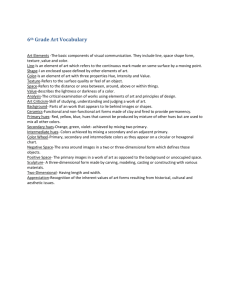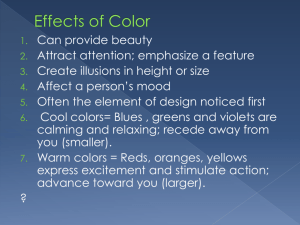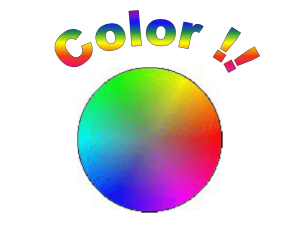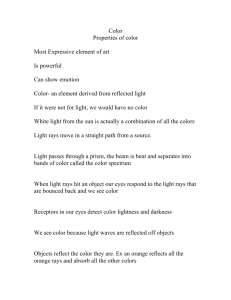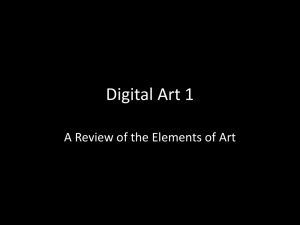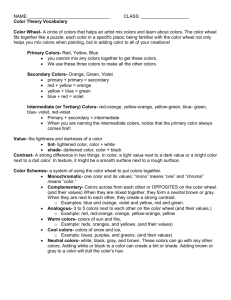COLOR - Hues produced through the reflection of light to the eye
advertisement
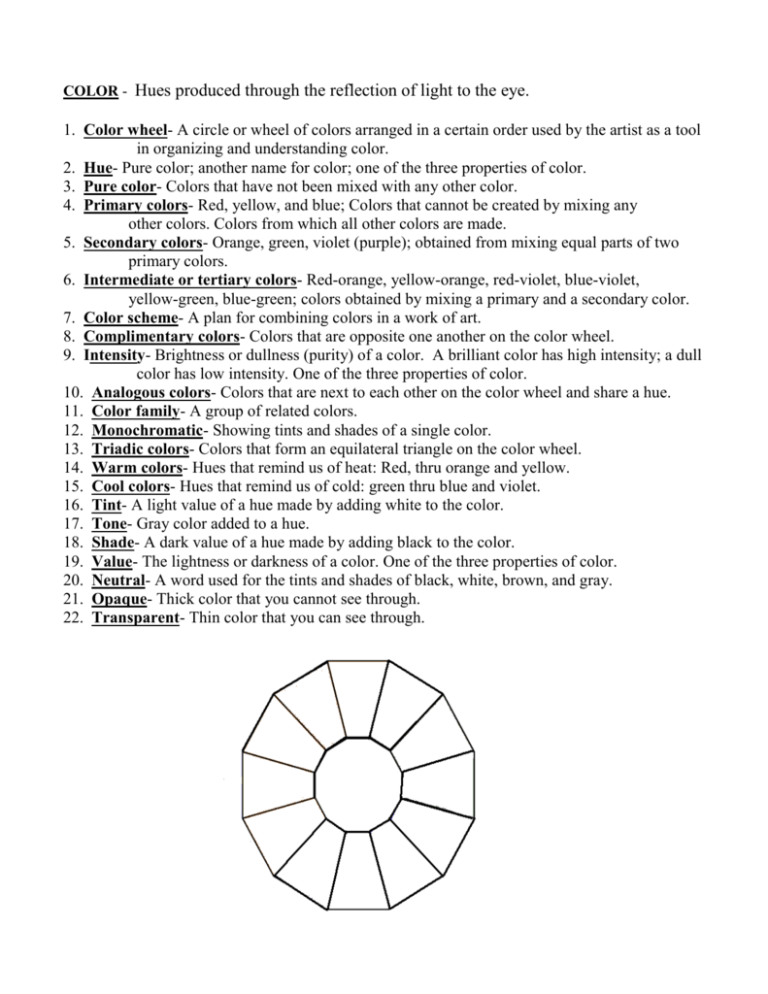
COLOR - Hues produced through the reflection of light to the eye. 1. Color wheel- A circle or wheel of colors arranged in a certain order used by the artist as a tool in organizing and understanding color. 2. Hue- Pure color; another name for color; one of the three properties of color. 3. Pure color- Colors that have not been mixed with any other color. 4. Primary colors- Red, yellow, and blue; Colors that cannot be created by mixing any other colors. Colors from which all other colors are made. 5. Secondary colors- Orange, green, violet (purple); obtained from mixing equal parts of two primary colors. 6. Intermediate or tertiary colors- Red-orange, yellow-orange, red-violet, blue-violet, yellow-green, blue-green; colors obtained by mixing a primary and a secondary color. 7. Color scheme- A plan for combining colors in a work of art. 8. Complimentary colors- Colors that are opposite one another on the color wheel. 9. Intensity- Brightness or dullness (purity) of a color. A brilliant color has high intensity; a dull color has low intensity. One of the three properties of color. 10. Analogous colors- Colors that are next to each other on the color wheel and share a hue. 11. Color family- A group of related colors. 12. Monochromatic- Showing tints and shades of a single color. 13. Triadic colors- Colors that form an equilateral triangle on the color wheel. 14. Warm colors- Hues that remind us of heat: Red, thru orange and yellow. 15. Cool colors- Hues that remind us of cold: green thru blue and violet. 16. Tint- A light value of a hue made by adding white to the color. 17. Tone- Gray color added to a hue. 18. Shade- A dark value of a hue made by adding black to the color. 19. Value- The lightness or darkness of a color. One of the three properties of color. 20. Neutral- A word used for the tints and shades of black, white, brown, and gray. 21. Opaque- Thick color that you cannot see through. 22. Transparent- Thin color that you can see through.

